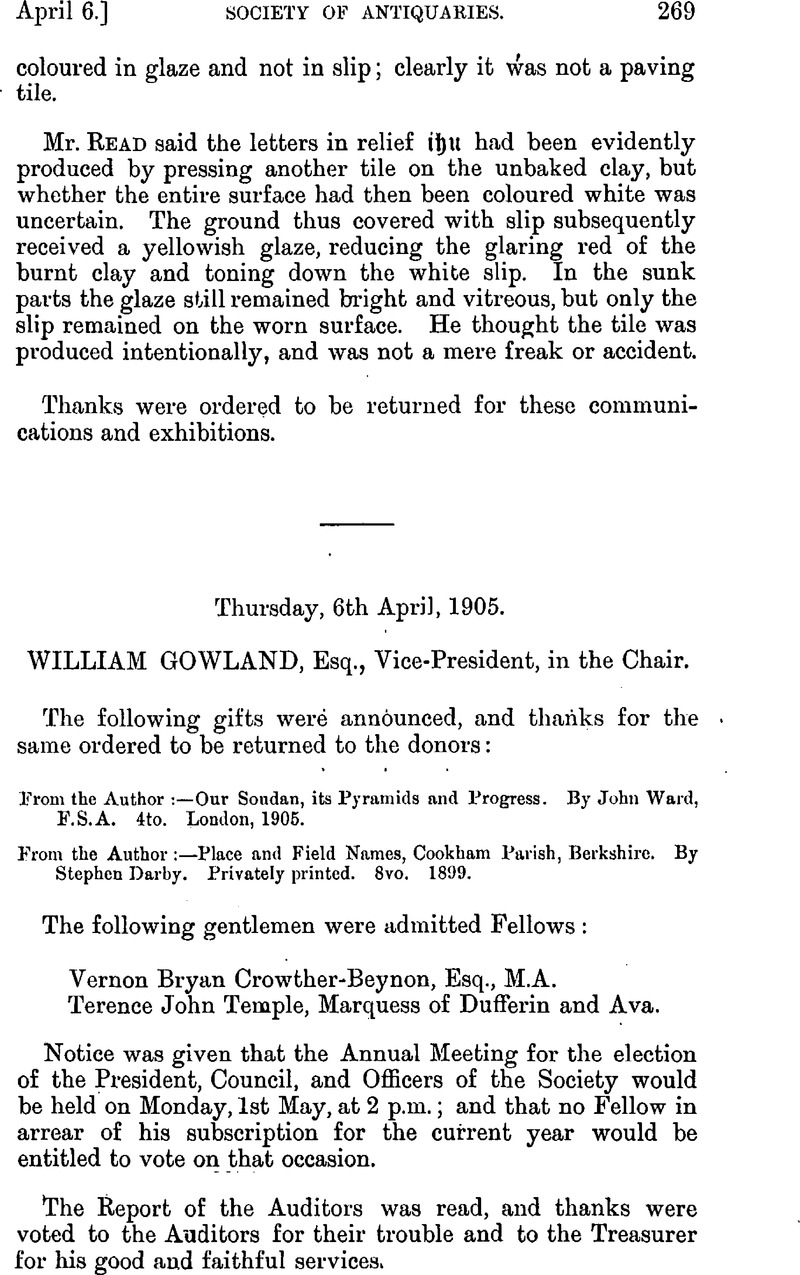No CrossRef data available.
Published online by Cambridge University Press: 10 May 2010

page 271 note * This does not include the balance in hand (£19 15s. 6d.) of the Research Fund.
page 276 note * Archaeologia, xxxii. 423.
page 276 note † Ibid. xvi. 153.
page 276 note ‡ Queen v. Lady Joan Young. Coke's Reports, iv. 82 (London, 1826). See also a paper “On the Regulations antiently prescribed in regard to Swans” by J. R. Bromehead (Proc. Arch. Ins. 1848, p. 296, Lincoln); and a paper on the same subject by Ed. Peacock (Archœological Journal, xli. 291, 1884).
page 277 note * Will proved February 19, 1556. P. C. C. 6 Wrastley.
page 277 note † An account of the Capells, with a pedigree, will be found in Transactions of the Esssex Archœological Society, ix. 243.
page 278 note * Public Record Office : Museum, Case H, 75. “A roll of 1497–1504, with additions dated 1515, showing the distinctive marks upon the bills of swans belonging to various persons in parts of Lincolnshire and Cambridgeshire.”
page 280 note * The illustration of the Hoveton roll reproduces both the Stalham marks.
page 283 note * Miscellanea of the Exchequer, ![]()
page 284 note * The surname is doubtful. Another name has been erased and the word “Stamford” below seems to belong to the erasure, while “Wellysthorpe” is written on the swan's head by the same hand us “my lady.”
page 285 note * The word represented by dots is nearly illegible, but looks like “Ammarllys.” Whether this is some form of “Admiral” I do nnt know, but regular Admiralty jurisdiction was not granted to the town until 1568, and the list of judges in Thompson's History of Boston does not begin until 1581.